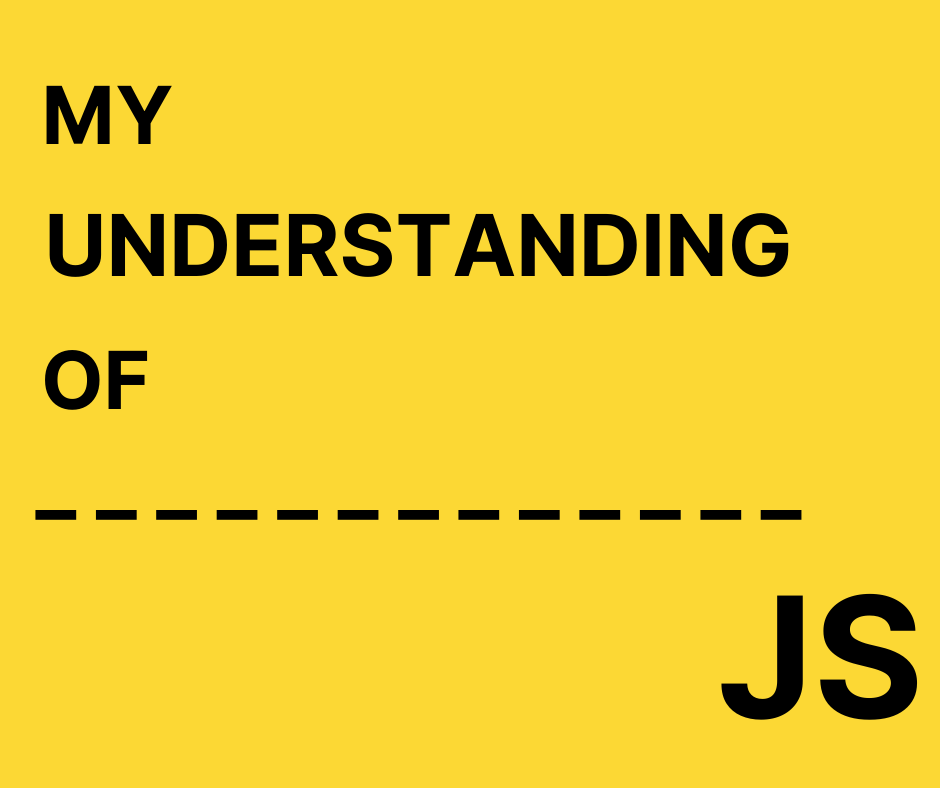My Understanding of Primitive Types and Special Values
October 27, 2020
Look at the following code and guess what will be the answer.
var x = 5;
x++;
console.log(x);
var x = "5";
x++;
console.log(x);
Is it going to be an error for the second case? Is it going to be 6? I was in hell when I was asked this question.
//The answer is
6;
6;
Do you know what happened here?
x was a string in the second case. It was converted into a number and then incremented.
Do you know why I put such questions above? Because we will be discussing the Primitive Types and Special Values.
Javascript has the following primitive types:
undefinedstringbooleannumberbigintsymbol
What is a primitive type?
A primitive type is a value in the lowest level of the language implementation, think of it as a building block. It is not an object and has no methods to call.
Wait a minute! It has nomethods to call? All my life I have been doing this
var s = "primitive";
s.length; // 9
How the heck are we calling length on s? The answer to this question is Boxing which JS does for itself. JS converts s into an object of the String class and we call its methods.
In JavaScript, variables don't have types, values do.
When we assign a value to a variable, then we use operator like typeof to figure out the value and to determine something about its identity, its kind, its type.
NB: When we do typeof x we do not ask the type of variable, rather we ask for the type of the value that is currently in x.
Now, read the bold text above again and it would make a lot more sense.
var v;
typeof v; // "undefined"
v = 1;
typeof v; // "number"
v = "1";
typeof v; // "string"
v = [];
typeof v; // "object"
v = {};
typeof v; // "object"
v = null;
typeof v; // "object" OOPS!
All outputs are logical except for the last, typeof null is an object? Yes! This is supposed to be a bug in JavaScript and now they cannot fix it because it will break a lot of code. Now, it is very logical why null is not a primitive type.
typeof doesnotexist; //"undefined"
It's weird, isn't it? If the variable doesn't exist, its type is still undefined. Don't you think it should be something like undeclared?. Wouldn't it be more expressive?
Javascript treats undeclared variable as undefined type and it is one of that nitty-gritty to care about.
Also, We can infer a fun fact out of this. typeof operator is the only operator that can reference a thing that does not exist and still not give an error. Please be mindful of this if and when you try this is production :p.
Observe those quotes in the returned value from typeof, it is a string. typeof guarantee that it will always return string.
typeof typeof []; //"string"
typeof []; //"object"
typeof "object"; //"string"
I guess this example must have helped to understand typeof better.
Special Values#
Within primitive types, we have special values that we should focus on, quite a few but we will focus on two special values that crop up more often than we would like.
NaN#
Many of us think of it as an acronym for "Not a Number", which is incorrect. In Javascript,NaN is a special value that means an invalid number.
typeof NaN; //"number"
var number = 5; //5
number - "four"; //NaN
var nan = Number("n/a"); //NaN
I hope these examples made sense and the last example is a possible and recommended way to create NaN. NaN has a very strange property, it is the only value that is not equal to itself.
NaN === NaN //false
So if the triple equals lie to us, we need a way to determine if a value is NaN. isNaN() is a utility function that can help us determine.
isNaN(32); //false
isNaN(NaN); //true
isNaN("AmINaN"); //true OOPS!
Strange! Isn't it? This worked for the first two examples and gave the wrong answer in the last example. Well, because of its implementation. isNaN converts the argument that is passed to a Number and then checks whether it is a NaN.
So, the last example coerced to something like this:
isNaN(Number("AmINaN"));
//we all know that
Number("AmINaN"); //NaN
//as a result
isNaN(NaN); //true
How would you check if a Number is NaN? There is another utility function that will always give you the correct answer.
Number.isNaN("AmINaN"); //false
Here is a custom method that will not result in an incorrect value.
function isItNaN(n) {
return n !== n;
}
Negative Zero#
Let's talk about another special value that exists, -0. I was in complete oblivion that something like -0 exists in Javascript. Negative zero is essentially zero with a signed bit on.
var negZero = -0;
negZero === -0; //true
negZero === 0; //true OOPS!
negZero.toString(); //0 OOPS!
negZero < 0; //false
negZero > 0; //false
Weird! All the above operation seems to be weird. It kinda feels like they are cheating. Triple equals lie to us, greater than and less than are behaving weird.
So how the telling one could determine whether we have a -0. There is a function at our rescue, In ES6 we had Object.is() come to our rescue.
Object.is(0, -0); //false
Object.is(-0, -0); //true
There is another possible way to determine for -0,
//we know that in JS
1 / 0; //Infinity
1 / -0; //-Infinity
We can use this fact to create our custom function.
function isNegZero(x) {
return x === 0 && 1 / x === -Infinity;
}
This is it from my side folks, I'll come back to discuss coercion in Javascript. I would love to hear from you, discuss with me on Twitter or ping me on LinkedIn.
See you 👋
